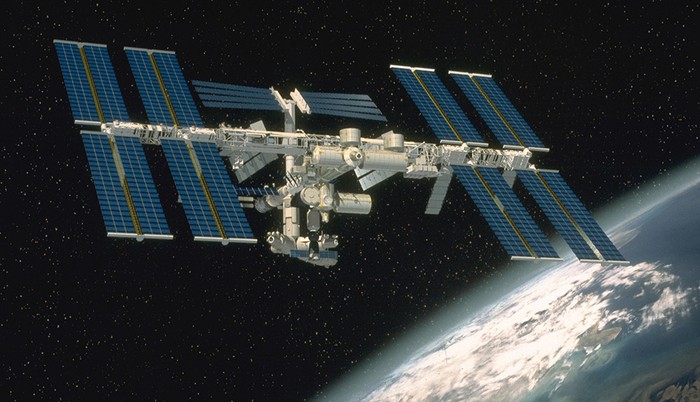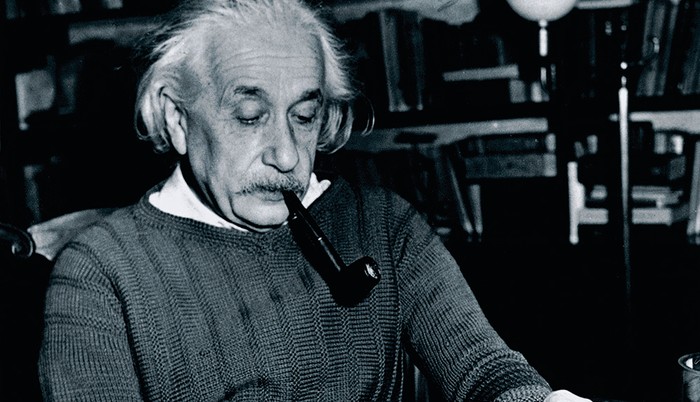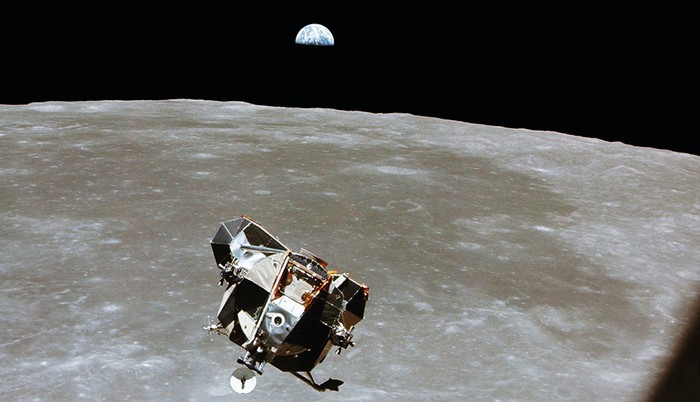
What is gravity? A guide to nature's most mysterious force (and what we still don't know)
Everyone knows that what goes up must come down. But why? Gravity, it turns out, is full of surprises…
Without gravity, we wouldn’t exist. It provides the force that keeps us on the surface of the Earth, and the Earth in orbit around the Sun.
It was responsible for the formation of the Solar System in the first place, and it’s the gravitational attraction of all the material in the Sun, pulling it tightly together, that makes it possible for nuclear fusion to take place, giving us heat and light.
Yet despite its ubiquity, gravity is one of the most mysterious forces in the Universe.
What is gravity?
As one of the four fundamental forces of nature – alongside electromagnetism and the strong and weak nuclear forces – gravity is a hugely influential natural phenomenon.
It’s a property of matter, of stuff. In a nutshell: all matter is attracted to all other matter. The more matter there is, and the closer objects are to each other, the bigger that attractive force.
And unlike electricity and magnetism, which can either repel or attract, gravity always pulls things together.
Read more about gravity:
- The quest for quantum gravity: why being wrong is essential to science
- Something’s wrong with gravity
What was Newton’s theory of gravity?

Newton famously stated that he did not have a hypothesis for how gravity worked.
Instead, his starting point for describing it in action was the idea that gravity was universal – that the same thing that made an apple fall from a tree kept the Moon in orbit.
With this concept, a collection of astronomical data, and some clever thought experiments, Newton was able to show that just three things influence the gravitational attraction between two objects: the mass of each object and the distance between them.
Although he never wrote it out in this form, his theory would show that gravitational attraction follows an inverse square law. The pull of gravity can be calculated by multiplying together the masses of the two objects and then dividing by the square of the distance between them. So the attractive force of gravity goes up as either of the objects’ masses increases, or as they get closer together.
This simple relationship was enough to explain almost all of the movement of the Moon and planets, and would be all that NASA needed to calculate a safe trajectory for the Apollo mission to the Moon.
What is the equivalence principle?
The equivalence principle is based on what Albert Einstein described as his “happiest thought”.
This was that “if a person falls freely, he will not feel his own weight”. In other words, acceleration and gravity are exactly equivalent and indistinguishable.
We see this happening on the International Space Station. The pull of gravity at the station’s orbital distance from Earth is around 90 per cent of that on the surface – and yet, astronauts float.

The reason people float about up there is because they are constantly falling towards our planet. We might expect them to crash into the Earth’s surface, but they are also moving sideways at just the right speed to keep missing – that’s what being in orbit involves.
More like this
The equivalence principle shows that accelerating, as happens when a person falls, cancels out their weight. Einstein made the leap from his happy thought to suggest that acceleration and gravity are, in effect, the same thing.
And this inspired his General Theory of Relativity, which both predicts the force of gravity and explains how it works.
What is Einstein's theory of General Relativity?
From his equivalence principle, Einstein was able to show that bodies with mass – anything from an atom to a star – warped space and time.
And it was this warping that explained something Newton had never been able to show: why gravity was capable of operating at a distance.
Like a basketball on a trampoline surrounded by marbles, more massive objects produce larger warps in the fabric of space-time, drawing in nearby objects and causing them to move in curved trajectories. But even smaller bodies have an effect – each of us exerts a tiny gravitational force on the objects around us.

Because he was taking a very different approach from Newton, Einstein had to use a different kind of mathematics, one that he himself initially knew little about: the mathematics of curved space.
And he had to take into account various secondary effects which Newton had no reason to suspect existed, such as the surprising discovery that gravity has an effect on itself.
Einstein’s equations of General Relativity do everything Newton’s equation does, predicting the size of the attractive force between two bodies, but because they describe the way that anything with mass warps space and time, they can do much more.
Did Einstein prove Newton wrong?
Absolutely not. Newton’s work was descriptive: he fitted a simple mathematical equation to what was observed.
His mathematics tell us nothing about how gravity works, but as a description of the behaviour of everyday things, it worked very well – and still does.

What Einstein did was to help us understand what causes the force we describe as gravity.
He was able to show that there are certain circumstances, typically where the pull of gravity gets very strong, where Newton’s equation is not a good enough approximation.
In these cases, we have to bring in Einstein to get a more accurate figure. And Einstein also comes in useful to make predictions that wouldn’t even be envisaged under the basic workings of Newton’s physics.
What proof do we have for General Relativity?
There is a huge amount of evidence for General Relativity.
Before Einstein came up with his theory, astronomers had struggled to explain an aspect of Mercury’s orbit called its precession, where its point of closest approach to the Sun gradually changes position. Newton’s equations couldn’t explain the full effect, but Einstein’s work did.
What’s more, the idea that gravity was caused by a warp in space and time was also testable, because it meant that (for instance) light passing close to a very massive body should travel in a curved line, passing through the warped space that the body creates.

This was first observed with light passing close to the Sun during a total eclipse in 1919, and has since been seen when distant galaxies act like lenses, bending the path of light behind them.
Another of the predictions of Einstein’s equations is that being near a massive body slows time down: this is why we need to correct the signal from the GPS satellites that give us sat-nav.
Equally, an experiment called Gravity Probe B has demonstrated that a rotating massive body drags space-time around with it like a rotating spoon in honey, just as Einstein had foreseen.
What does gravity have to do with black holes?
The predictions of Einstein’s theory are usually the result of solving simplified versions of his equations. One of the earliest described a compressed mass where all the matter was in a single point – a ‘gravitational singularity’.
Later, it was realised that some ageing stars would be unable to resist the pull of gravity and should collapse in on themselves to form such a point, creating a black hole. The gravity in a black hole is so strong that not even light can escape.

Similarly, General Relativity predicted that the very fabric of the Universe could expand and contract. Combined with observations, this has become the basis for our best theory on how the Universe developed: the Big Bang model.
It is also General Relativity that could shed light on dark energy – the mysterious phenomenon that seems to be accelerating the expansion of the Universe.
What are gravitational waves?
A body with mass warps space and time, so if that body accelerates through space it should cause ripples in the space-time around it.
These ripples are called gravitational waves and move outwards, rather like the way that accelerating electrons up and down an aerial generates the electromagnetic waves of radio and television.
Gravitational waves, which Einstein predicted shortly after developing his General Theory of Relativity, should be produced all the time from vast numbers of sources. However, gravity is an extremely weak force, which means that these waves are extremely difficult to detect.

When the LIGO experiment observed gravitational waves for the first time in September 2015, it was the result of a massive disturbance in space-time caused by two merging black holes.
LIGO’s detectors are so sensitive that any vibrations have to be eliminated, from passing cars to distant waves crashing on a beach.
Gravitational waves are important not because they ‘prove Einstein’s theory’ – we already have plenty of evidence for that – but because they give us a new way to study the Universe, looking back to its earliest years where not even light can reach.
Does General Relativity explain everything?
Almost certainly not.
General Relativity is extremely effective and doesn’t put a foot wrong when it comes to making predictions about the behaviour of everyday objects, but there are a few circumstances – notably in the heart of a black hole, or in describing the Universe before the Big Bang – where the theory breaks down.
The physics of the very small is described with impressive accuracy by quantum physics, but General Relativity and quantum theory are incompatible. All the other forces of nature are ‘quantised’ – coming in chunks, rather than continuously variable amounts.
The assumption is that it should be possible to develop a quantum theory of gravity that would bring it in line with the other forces and still produce the same results as Einstein’s theory for larger objects.
As yet, the best attempts are string theory/M-theory and loop quantum gravity, but neither one has produced any usable predictions yet.
Could gravity be caused by a subatomic particle?
It’s very likely, and it already has a name: the graviton. One way that quantum theory represents the transmission of a force like electromagnetism is as a flow of carrier particles called ‘bosons’.
In the case of electromagnetism, the particle is the photon. Each particle is a ‘quantum’ – a chunk – of the quantised phenomenon.
So if gravity is a quantum effect, we assume that there will be a graviton as its carrier. However, don’t expect one to turn up at the Large Hadron Collider any time soon. A graviton is so unlikely to interact with another particle in a detectable way that there is currently no realistically conceivable experiment that could spot one.
Is there such a thing as antigravity?
Not that we know of. Unlike electromagnetism, gravity is a one-way effect – it just attracts. We can offset gravity with other forces; you do that every time you pick something up.
It looks particularly impressive when the opposing force is invisible electromagnetism – such as when something floats over a magnet – but it’s not antigravity.
We don’t know any way to shield against gravity, either: it passes through everything. If we could stop gravity in its tracks, we could make a perpetual motion machine and generate free energy. Paint the same side of each paddle of a waterwheel with the barrier substance.
The paddles on one side of the wheel will have their bare sides facing the Earth, so will feel its gravitational pull, while the paddles on the other side will be screened from gravity. So just one side of the wheel will be pulled downwards, and it will turn forever.
The one small chance of discovering antigravity is that antimatter may be gravitationally repelled by ordinary matter.
Scientists at CERN will soon have enough antimatter to test this out, but most physicists think it will behave just like the normal stuff.
Read more about cosmology:
Authors
Brian is a writer of popular science books, with a background in experimental physics. The topics he writes on range from infinity to how to build a time machine. He has also written regular columns, features and reviews for numerous magazines and newspapers, and given lectures at the Royal Institution in London, Oxford and Cambridge Universities, and Cheltenham Festival of Science.
Sponsored Deals

May Half Price Sale
- Save up to 52% when you subscribe to BBC Science Focus Magazine.
- Risk - free offer! Cancel at any time when you subscribe via Direct Debit.
- FREE UK delivery.
- Stay up to date with the latest developments in the worlds of science and technology.





